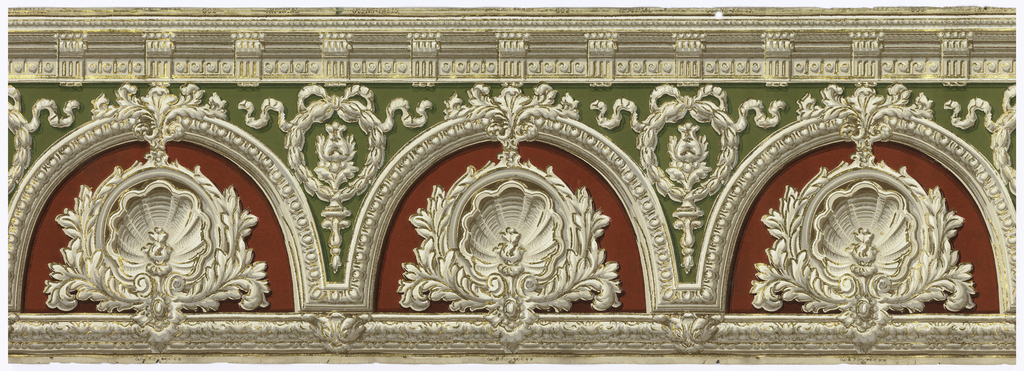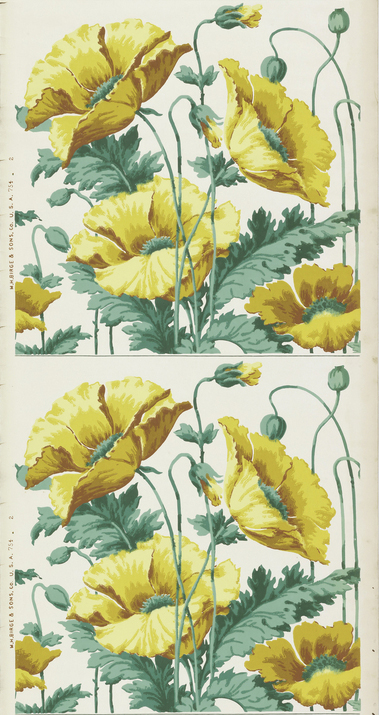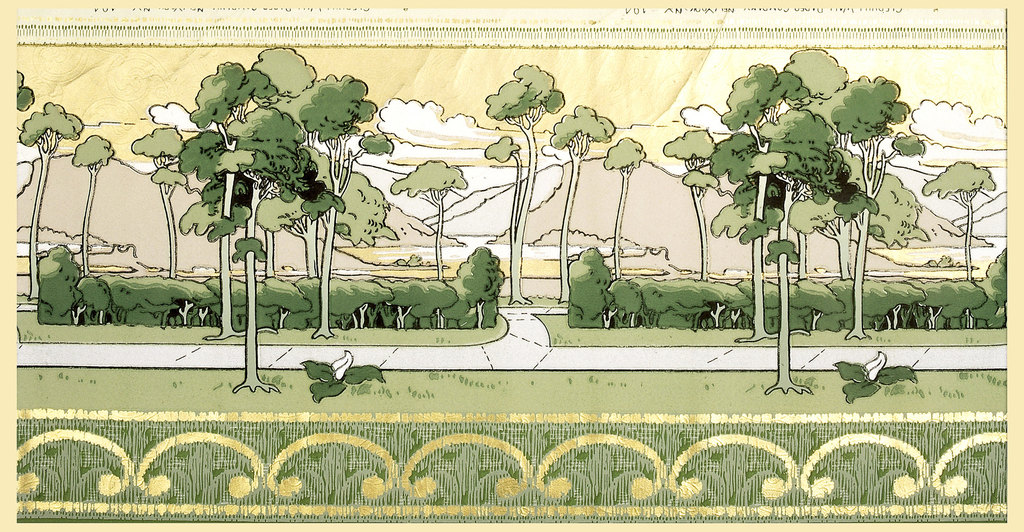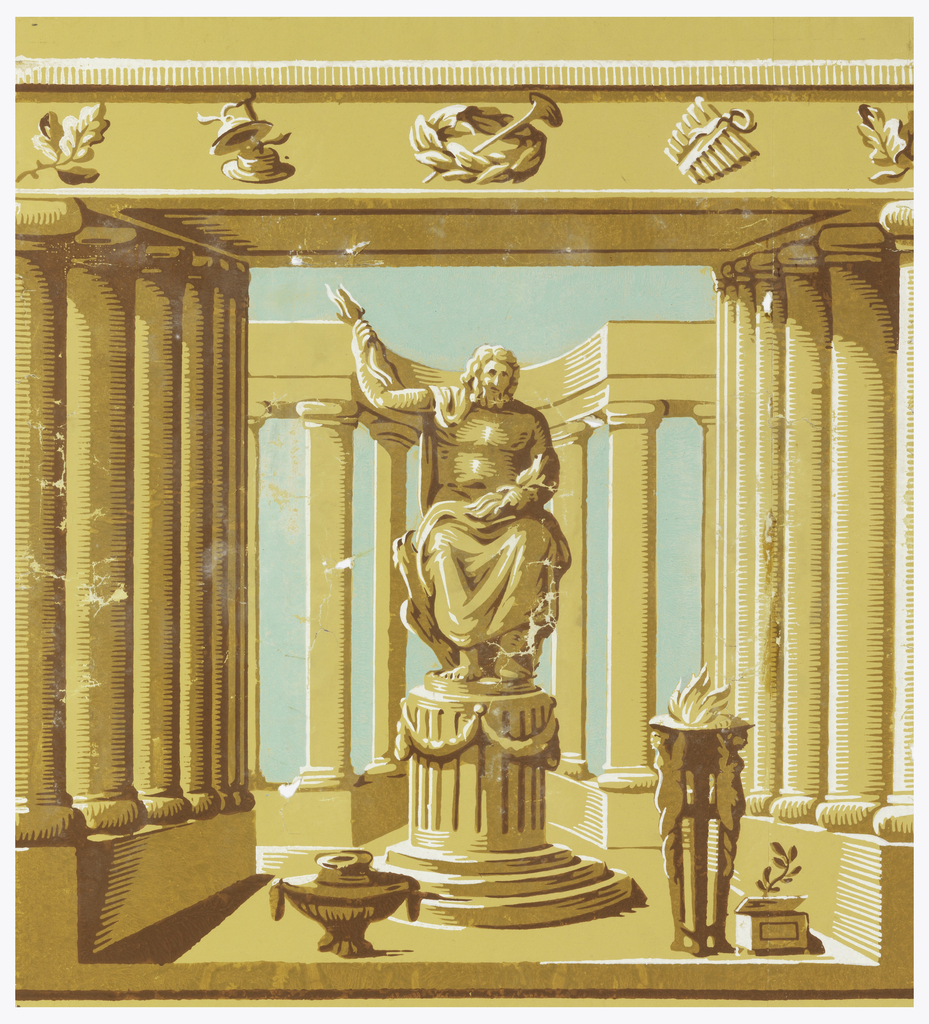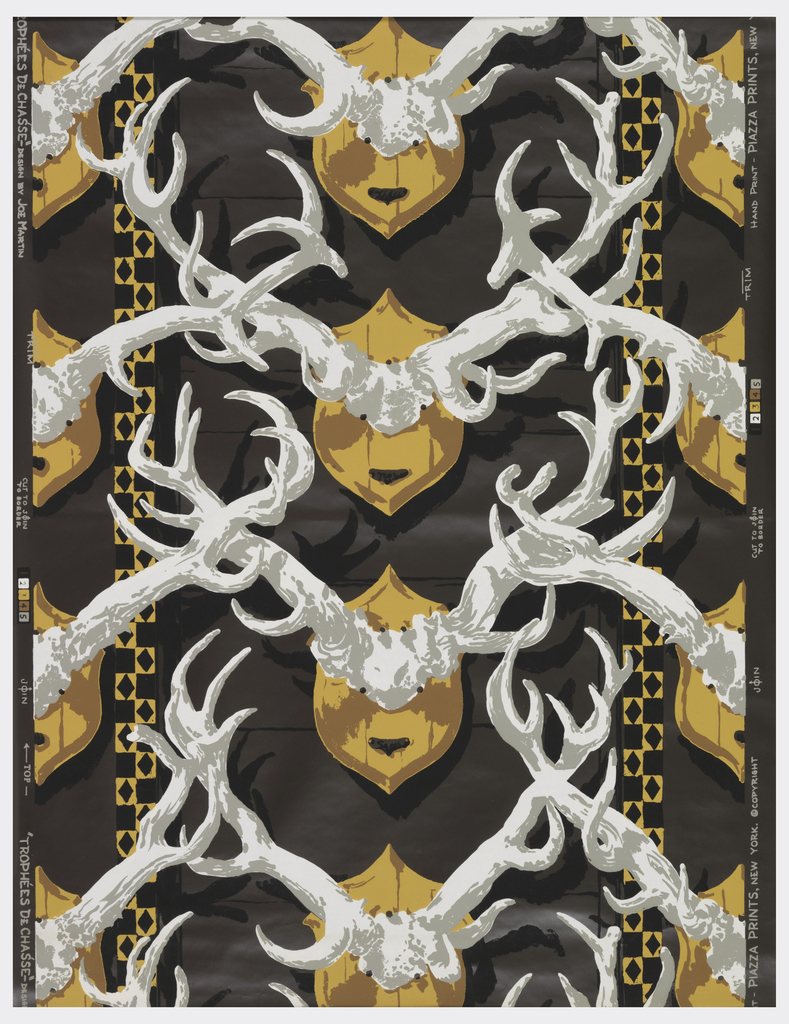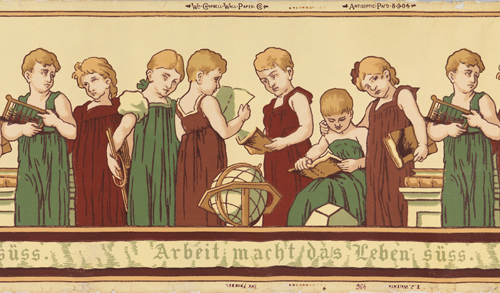This wide architectural frieze shows contains scallop shells rendered in high relief, set within arches outlined with egg and dart moldings, between which are wreath-enclosed torches. Above this is a dentil molding. This is printed in numerous shades of gray, with larger fills of complementary colors of red and green. There are also elements printed...
This roll of wallpaper sports a rather unusual look. The design is printed vertically but it is not a continuous pattern. Intended to be installed as a wide border or frieze running horizontally, each almost square repeat of this design would be cut apart with the sections installed side by side, as the floral and...
In this frieze, printed by the Gledhill Wallpaper co. in 1906-7, tall, slender trees stand in the foreground, growing from a well-manicured lawn like elongated stalks of broccoli. A paved, white sidewalk runs horizontally across the length of the frieze, branching off in the center of the panel and leading to a majestic landscape of...
This classically inspired wallpaper panel was block printed on handmade paper c.1785-90 in France. Jupiter, king of the Gods of Rome, is rendered in tones of ochre and brown against an aqua background. He sits atop a garlanded pedestal with fists full of thunderbolts, his right arm raised and ready to dispense lightening in the...
Trophées de Chasse is screen-printed on vinyl and features a repeating, overlapping pattern of mounted deer antlers printed over a dark background of tribal-inspired stripes. And it was available with a matching frieze to top off the wall. When I first saw this wallpaper, I had to laugh. Not because it’s silly (maybe it is?)...
I have always been captivated by the realism and voluptuousness of this frieze. This trompe l’oeil design, with its drapery swags, ostrich plumes, jewels, and tassels, is an over-the-top depiction of luxury materials. The attention to detail required to bring this degree of realism to light is exemplary. The drapery swags are flocked, then overprinted...
The early years of the twentieth century were the high point in children’s room decoration. The Industrial Revolution brought about increased wealth, and children were given their own rooms for the first time. The decoration of a child’s room was supposed to be stimulating and educational, and needed to clearly designate the space as belonging...
